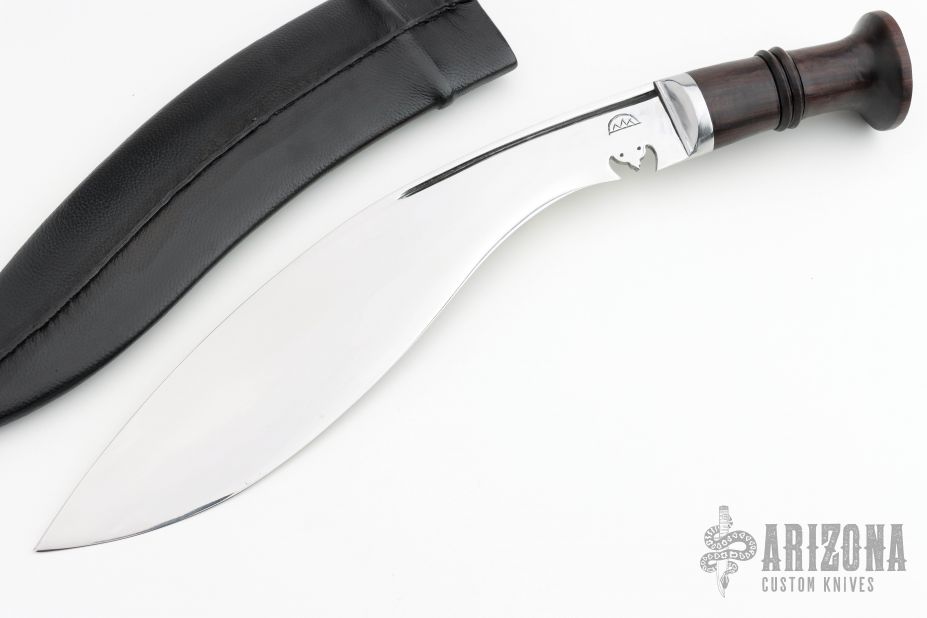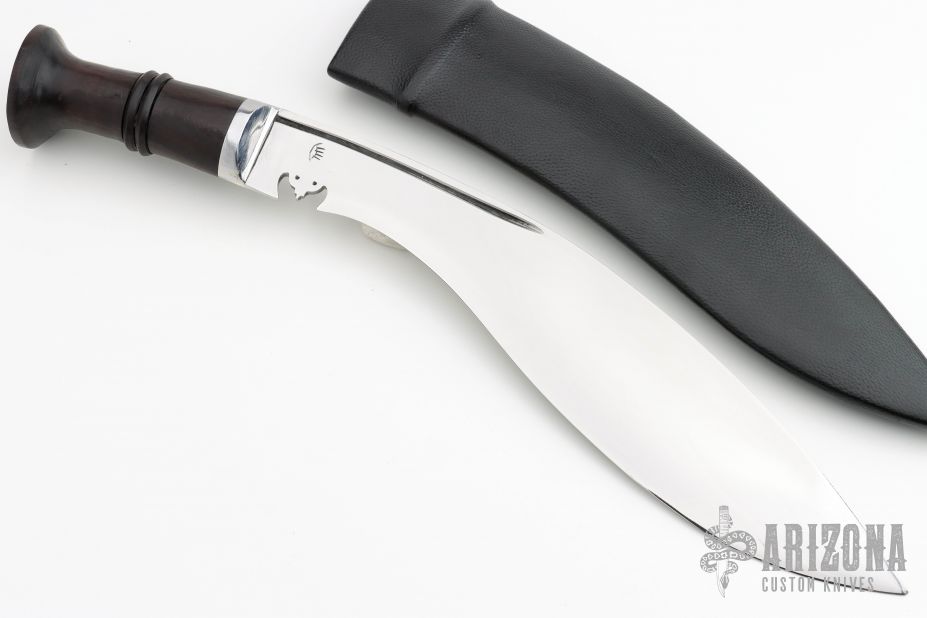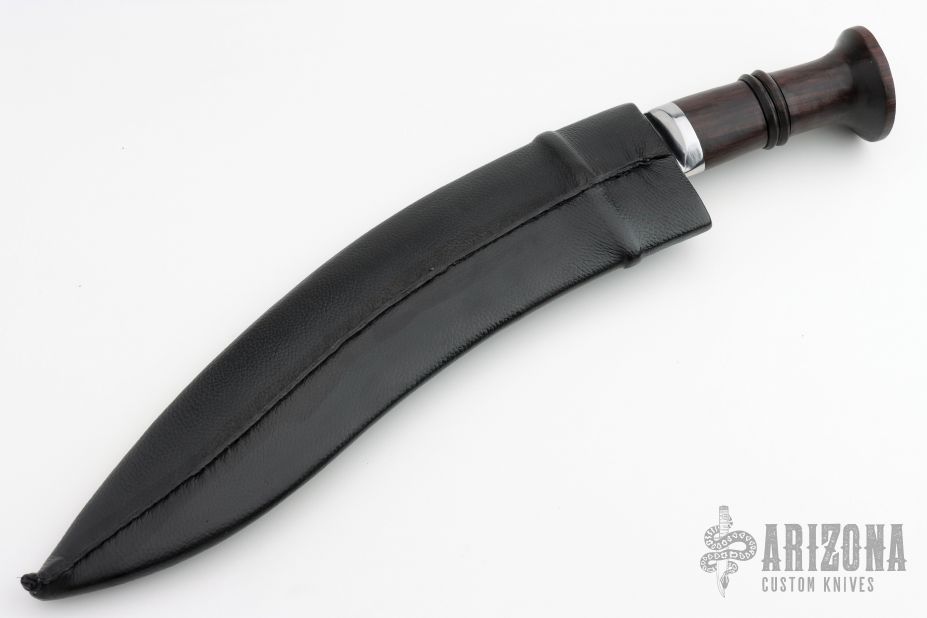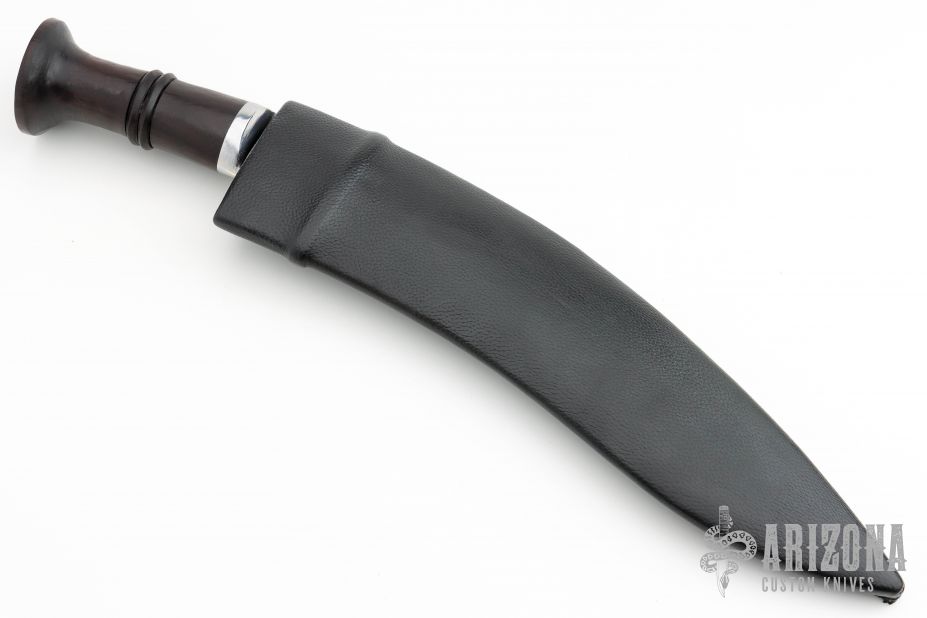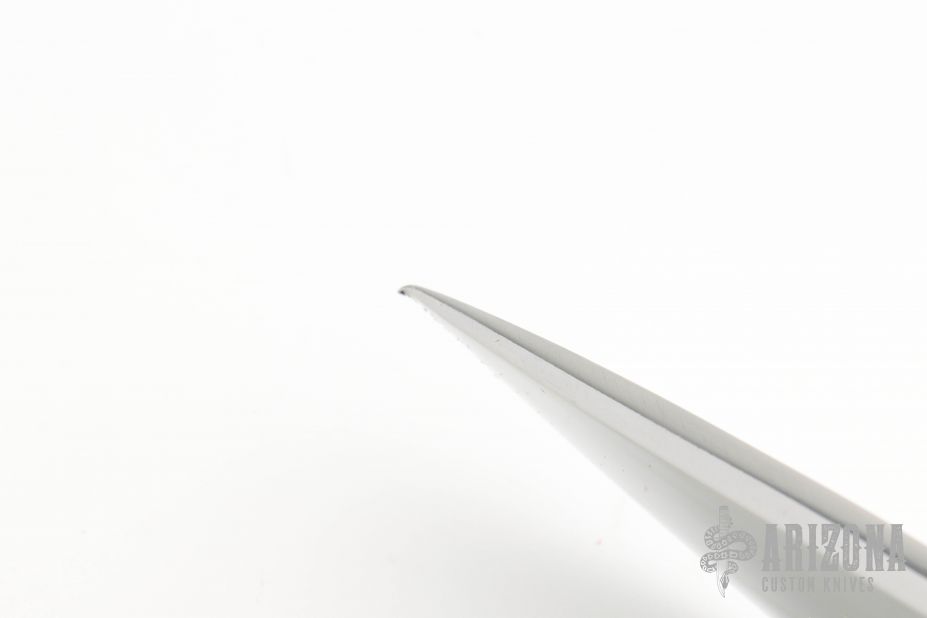Overview
Khukuris have been used in warfare for since the beginning of their existence, whether in disputes between the old kingdoms of nepal or when defending Nepal from the British in the Ghurka war of 1814-16. However these knives weren’t a specific model but rather a hodgepodge collection of villager’s tools, family heirlooms and one offs for individuals or units of soldiers as the need arose. The first khukuri to be produced on a large scale and made standard military issue was the MK1, beginning manufacture in 1903 until 1915 by the Colonial Indian armed forces. And what a khukuri it is.
The MK1 khukuris in general were large, very powerful knives often with particularly broad spines and unusually broad blades for a military pattern. This meant they were on the slower and clunkier side as far as military blades go, but would be devastating if in the hands of a strong enough user. The Fort William mk1 is the most desirable and collectible out of all the variants, with a distinctive temple shaped cho and a more refined build that features hollow forging and more distal taper for a superior fighting balance.
It also features the iconic mk1 handle with a sturdy threaded rat tail tang which is tightened against the handle with a recessed nut of the type that was used for rifles at the time. The handle itself has become quite popular as a custom request on our other blades due to it’s smooth shape and the way it fills the hand- it is quite large at the bolster and thick along the whole length, with a circular, smooth and bare pommel at the rear. This absence of a butt cap is something that was a lot more common on 19th century khukuris and serves to take the forward balance that a khukuri is known for and accentuate it even further.
As an outdoors blade it can be adapted to finer work and handle brush clearing fine, however the very steep, tall grind and the broad spine combines to make it the highest performing chopper in our traditional lineup. At any given blade length this blade will bite deeper into wood than any of our other traditional khukuris. This also gives it a high level of martial application as well and would deliver catastrophic cuts when paired with a slower and more deliberate style or in the hands of a powerful practitioner.
As with our other blades we offer this in a few different lengths. We offer an 11″ blade for a more compact and manageable option that still focuses on deep, powerful chopping as well as a longer, slimmer 15″ version that packs in even more reach, power and tip speed without becoming too clunky.
Blade Length
13″: 8mm thick at bolster, 700g (historical, ideal)
These blades historically had quite short and round handles, with the 4.75″ being closest in length to the original our MK1 was based off, but this one is measuring 4.25″.
On this blade we offer a military dap as an option. This features a laceup frog as well as twin vertical loops with stud closures. These can be fully undone to remove the blade without undoing your belt and upsetting whatever else might be carried on there. This is a more complex, more accurate historical option for this blade but lacks the capacity for horizontal carry that all our other sheaths have. For general use we prefer our standard dap between the two. Please note that due to the girth of the handle on this blade we cannot reliably make it with buffalo horn. Such large pieces come along very rarely and are in very high demand when they are available.
It was designed to be dependable and get the job done and that it did, with the MK1 finding use in various border conflicts in Nepal but most notably in world war 1, in Turkey at Gallipoli, all along the Western Front at the Somme, the Hindenburg line and in Northern Africa. The knives were used to slit enemies throats in their sleep and proved deadly when storming enemy machine gun nests. Simple, strong and functional, the MK1 was a hard knife designed for hard men. If you’re looking for a piece of history to add to your collection or a heavy use khukuri that has a field proven pedigree, then look no further than the mk1.
This one is in excellent condition, but does have a bent tip.

